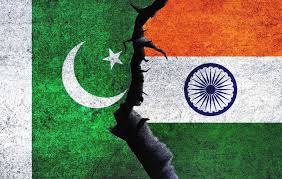
Home Minister Amit Shah’s declaration that India will “never restore” the Indus Waters Treaty with Pakistan has escalated a long-simmering dispute into a full-blown water conflict, threatening one of the region’s last remaining frameworks for cooperation. By placing the 1960 accord in abeyance and announcing plans to divert rivers long earmarked for Pakistani irrigation, New Delhi has thrust bilateral ties into uncharted territory. Islamabad, in turn, has warned that any unilateral reallocation of treaty waters would amount to an act of war, setting the stage for legal, diplomatic and potentially military confrontation over South Asia’s most vital shared resource.
Treaty Suspension and Water Diversion Plans
India’s move to suspend its obligations under the Indus Waters Treaty comes in the wake of a militant attack in Indian-administered Kashmir that New Delhi attributed to Pakistan-based groups. Citing national security imperatives, New Delhi announced it would divert supplies from the Ravi, Beas and Sutlej rivers—collectively responsible for up to 80 percent of Pakistan’s irrigable water—to Rajasthan and other domestic uses. Officials have fast-tracked canal projects, including the construction of the Shakambhari and Chamera-II link canals, designed to reroute flows southward.
These actions mark a stark departure from decades of Indian practice under the treaty, which allocates the three “eastern rivers” to India and the three “western rivers” (Indus, Jhelum, Chenab) to Pakistan, while providing mechanisms for dispute resolution and joint management. India’s new posture effectively converts treaty-mandated transboundary flows into negotiable assets, subject to national security imperatives rather than rigid treaty guarantees. Statements from New Delhi indicate that once diversion infrastructure is in place, restoration of flows to Pakistan will be politically and logistically improbable.
Pakistan’s Retaliatory Posture and Legal Options
In Islamabad, the response has been unequivocal: Pakistan’s leadership views India’s abeyance declaration and canal projects as provocations that undermine the treaty’s legal foundation. Foreign Ministry spokespeople have reiterated that the treaty contains no clause permitting such a suspension, warning that any attempts to block river waters would be treated as an act of war. Parliamentary debates in Islamabad have called for channeling water compliance grievances to The Hague-based Permanent Court of Arbitration. Pakistan’s government is reportedly preparing a dossier to challenge India’s actions under international watercourse law, arguing that New Delhi’s unilateral measures violate both the treaty’s text and customary norms governing equitable utilization of shared rivers.
Beyond legal recourse, Pakistani strategists are exploring physical countermeasures. Plans are being discussed to accelerate dam and canal projects on tributaries upstream of the confluence with Indian-controlled rivers, maximizing water retention before flows reach the border. Experts point to the Diamer-Bhasha and Mohmand dams, if completed rapidly, as potential bulwarks against New Delhi’s diversion schemes. However, such engineering solutions carry high financial and environmental costs, and risk heightening tensions if perceived by India as hostile infrastructure undertakings within contested river basins.
Broader Implications for Regional Stability
The standoff over the Indus Waters Treaty has ramifications that extend beyond bilateral water allocation. Agriculture in Pakistan—where nearly half of the population depends on irrigated farming—relies heavily on guaranteed river supplies for staple crops such as wheat, rice and cotton. Disruptions to flows could trigger sharp drops in yields, food inflation, and mass displacement from rural areas. In India, policymakers frame diversion projects as crucial to alleviating acute water shortages in arid states, supporting industrial expansion and securing strategic autonomy over natural resources. Yet the specter of retaliatory actions by Pakistan, including cross-border militancy or diplomatic isolation efforts, looms large.
At the heart of the impasse lies a broader contest over resource sovereignty. Both countries confront growing demand for water amid climate-driven variability. Glacier-fed river flows in the Himalayas are projected to fluctuate widely in coming decades, intensifying competition over limited supplies. Environmental analysts warn that the bilateral freeze on treaty mechanisms hinders adaptive cooperation, undermining joint scientific monitoring of meltwater contributions and foreclosing collaborative flood-control measures. Without a functional treaty, both nations lose a critical channel for sharing hydrological data—an omission that could exacerbate disaster responses to cyclones, glacial lake outbursts, and monsoon anomalies.
As tensions mount, international actors are weighing steps to de-escalate the crisis. The World Bank, which brokered the original treaty, has offered to convene technical talks aimed at restoring dialogue on water-sharing arrangements. China, which plays a growing economic role in both capitals, has signaled willingness to mediate but faces skepticism from Pakistan given its simultaneous investment in India through regional forums. Meanwhile, Central Asian countries downstream in the Amu Darya basin are closely observing the outcome, aware that precedent-setting behavior in South Asia could influence water disputes across the broader Himalaya-Turanian water network.
Within India and Pakistan, civil society voices stress the urgency of preserving some form of cooperation. Water rights activists, agricultural cooperatives and environmental NGOs have initiated cross-border dialogues under neutral auspices, exploring concepts such as joint watershed management and virtual water trading to mitigate direct river diversions. They argue that decoupling water governance from broader political antagonisms is essential to averting humanitarian crises and ensuring food security for over 300 million people in the Indo-Pakistan basin.
The unraveling of the Indus Waters Treaty represents a low point in India-Pakistan relations, but it could also spur innovative water diplomacy if both sides perceive that mutual gains outweigh zero-sum calculations. If New Delhi’s diversion projects proceed, they could serve as leverage in broader negotiations, potentially pushing Pakistan to seek alternative water sources or agree to modified usage rights. Conversely, heavy-handed implementation risks provoking Pakistan to accelerate dam construction and legal counter-attacks, locking both countries into an escalating cycle of hydrological brinkmanship.
As the dispute over the Indus Waters Treaty unfolds, its resolution—or lack thereof—will shape not only the future of irrigation and agriculture in South Asia, but also the region’s capacity for transboundary cooperation in an era of intensifying environmental pressures. For now, the promise of a century-old treaty lies in jeopardy, with the Indus rivers flowing through a narrowing corridor of diplomacy and a widening gulf of mistrust.
(Source:www.ndtv.com)
Treaty Suspension and Water Diversion Plans
India’s move to suspend its obligations under the Indus Waters Treaty comes in the wake of a militant attack in Indian-administered Kashmir that New Delhi attributed to Pakistan-based groups. Citing national security imperatives, New Delhi announced it would divert supplies from the Ravi, Beas and Sutlej rivers—collectively responsible for up to 80 percent of Pakistan’s irrigable water—to Rajasthan and other domestic uses. Officials have fast-tracked canal projects, including the construction of the Shakambhari and Chamera-II link canals, designed to reroute flows southward.
These actions mark a stark departure from decades of Indian practice under the treaty, which allocates the three “eastern rivers” to India and the three “western rivers” (Indus, Jhelum, Chenab) to Pakistan, while providing mechanisms for dispute resolution and joint management. India’s new posture effectively converts treaty-mandated transboundary flows into negotiable assets, subject to national security imperatives rather than rigid treaty guarantees. Statements from New Delhi indicate that once diversion infrastructure is in place, restoration of flows to Pakistan will be politically and logistically improbable.
Pakistan’s Retaliatory Posture and Legal Options
In Islamabad, the response has been unequivocal: Pakistan’s leadership views India’s abeyance declaration and canal projects as provocations that undermine the treaty’s legal foundation. Foreign Ministry spokespeople have reiterated that the treaty contains no clause permitting such a suspension, warning that any attempts to block river waters would be treated as an act of war. Parliamentary debates in Islamabad have called for channeling water compliance grievances to The Hague-based Permanent Court of Arbitration. Pakistan’s government is reportedly preparing a dossier to challenge India’s actions under international watercourse law, arguing that New Delhi’s unilateral measures violate both the treaty’s text and customary norms governing equitable utilization of shared rivers.
Beyond legal recourse, Pakistani strategists are exploring physical countermeasures. Plans are being discussed to accelerate dam and canal projects on tributaries upstream of the confluence with Indian-controlled rivers, maximizing water retention before flows reach the border. Experts point to the Diamer-Bhasha and Mohmand dams, if completed rapidly, as potential bulwarks against New Delhi’s diversion schemes. However, such engineering solutions carry high financial and environmental costs, and risk heightening tensions if perceived by India as hostile infrastructure undertakings within contested river basins.
Broader Implications for Regional Stability
The standoff over the Indus Waters Treaty has ramifications that extend beyond bilateral water allocation. Agriculture in Pakistan—where nearly half of the population depends on irrigated farming—relies heavily on guaranteed river supplies for staple crops such as wheat, rice and cotton. Disruptions to flows could trigger sharp drops in yields, food inflation, and mass displacement from rural areas. In India, policymakers frame diversion projects as crucial to alleviating acute water shortages in arid states, supporting industrial expansion and securing strategic autonomy over natural resources. Yet the specter of retaliatory actions by Pakistan, including cross-border militancy or diplomatic isolation efforts, looms large.
At the heart of the impasse lies a broader contest over resource sovereignty. Both countries confront growing demand for water amid climate-driven variability. Glacier-fed river flows in the Himalayas are projected to fluctuate widely in coming decades, intensifying competition over limited supplies. Environmental analysts warn that the bilateral freeze on treaty mechanisms hinders adaptive cooperation, undermining joint scientific monitoring of meltwater contributions and foreclosing collaborative flood-control measures. Without a functional treaty, both nations lose a critical channel for sharing hydrological data—an omission that could exacerbate disaster responses to cyclones, glacial lake outbursts, and monsoon anomalies.
As tensions mount, international actors are weighing steps to de-escalate the crisis. The World Bank, which brokered the original treaty, has offered to convene technical talks aimed at restoring dialogue on water-sharing arrangements. China, which plays a growing economic role in both capitals, has signaled willingness to mediate but faces skepticism from Pakistan given its simultaneous investment in India through regional forums. Meanwhile, Central Asian countries downstream in the Amu Darya basin are closely observing the outcome, aware that precedent-setting behavior in South Asia could influence water disputes across the broader Himalaya-Turanian water network.
Within India and Pakistan, civil society voices stress the urgency of preserving some form of cooperation. Water rights activists, agricultural cooperatives and environmental NGOs have initiated cross-border dialogues under neutral auspices, exploring concepts such as joint watershed management and virtual water trading to mitigate direct river diversions. They argue that decoupling water governance from broader political antagonisms is essential to averting humanitarian crises and ensuring food security for over 300 million people in the Indo-Pakistan basin.
The unraveling of the Indus Waters Treaty represents a low point in India-Pakistan relations, but it could also spur innovative water diplomacy if both sides perceive that mutual gains outweigh zero-sum calculations. If New Delhi’s diversion projects proceed, they could serve as leverage in broader negotiations, potentially pushing Pakistan to seek alternative water sources or agree to modified usage rights. Conversely, heavy-handed implementation risks provoking Pakistan to accelerate dam construction and legal counter-attacks, locking both countries into an escalating cycle of hydrological brinkmanship.
As the dispute over the Indus Waters Treaty unfolds, its resolution—or lack thereof—will shape not only the future of irrigation and agriculture in South Asia, but also the region’s capacity for transboundary cooperation in an era of intensifying environmental pressures. For now, the promise of a century-old treaty lies in jeopardy, with the Indus rivers flowing through a narrowing corridor of diplomacy and a widening gulf of mistrust.
(Source:www.ndtv.com)





